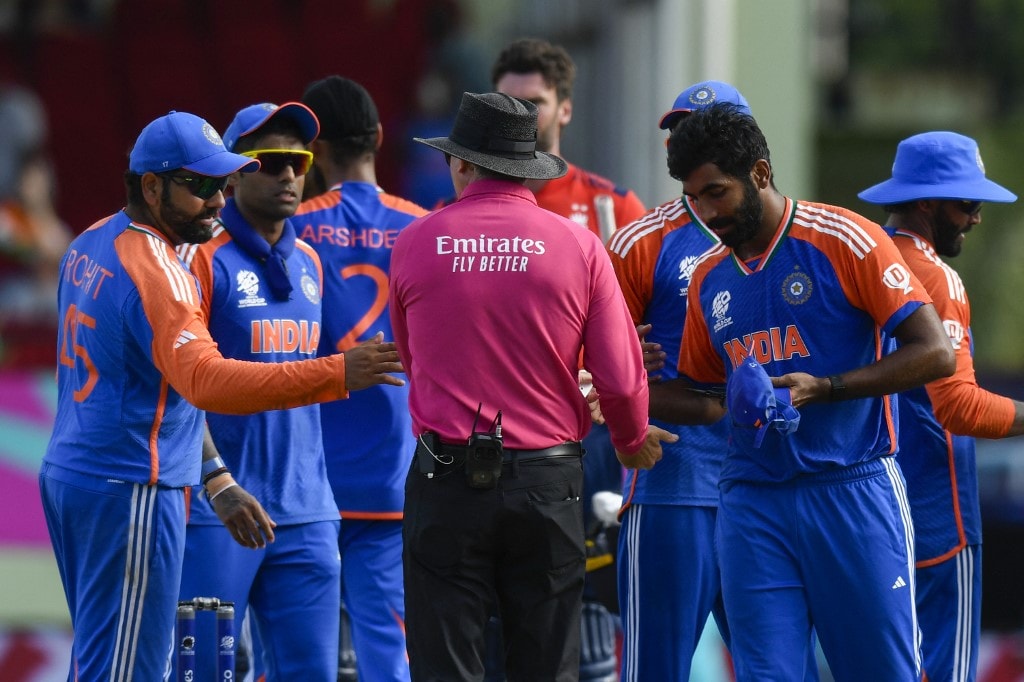Captain Chamari Athapaththu’s turbo-charged fifty combined well with the steadfast half-century of Harshitha Samarawickrama as a resilient Sri Lanka carved an eight-wicket win over defending champions India to bag their maiden women’s Asia Cup title in Dambulla on Sunday. This is the second time in nine Asia Cup editions (WODI and WT20I) across formats that India have lost a final. The last time India lost the final was against Bangladesh in 2018 in Kuala Lumpur. Tasked with hunting down a strong target of 166, Sri Lanka served well by Athapaththu (61b, 43b, 9×4, 2×6) and Samarawickrama (69 not out, 51b, 6×4, 2×6) and finished at 167 for two in 18.4 overs.
Athapaththu and Samarawickrama added 87 runs as Lankans always stayed ahead of their opponents.
The stand for the for the second wicket was also of contrasts as Samarawickra was the yin to the yang of her aggressive leader.
Athapaththu fetched her fifty in 33 balls, and Samarawickrama went past her mark in 43 balls and their shot selection too was vastly differing.
Athapaththu scored through almost every reachable place on the field, and her assault on left-arm spinner Tanuja Kanwar, who she biffed for two fours and six in her first over, was stunning.
But at the other end, Samarawickrama clearly lacked the power of her senior but she offset that with clever placings, such as reverse sweeps off left-arm spinners Deepti Sharma and Radha Yadav.
But she picked up the tempo when Sri Lanka reached a rather safer zone, muscling a slog-swept six off Yadav over mid-wicket.
In between, Deepti managed to bowl Athapaththu around her legs with a fuller delivery that sparked celebrations among the Indians, who till then looked lethargic on the field.
But those merriments were premature as Samarawickrama found an able sidekick in Kavisha Dilhari (30 not out, 16b, 1×4, 2×6) as the duo added 73 runs off just 40 balls for the unbeaten third wicket to guide their side home.
But an equal share of credit should go to the Lankan bowlers as well for stifling a set of free-flowing India batters.
Smriti Mandhana‘s conditions-defying half-century (60, 47b, 10×4) had powered India to a fighting 165 for six and she received reasonable backing from Jemimah Rodrigues (29, 16 balls, 3×4, 1×6) and Richa Ghosh (30, 14 balls, 4×4, 1×6).
But largely it was a tight contest for them against a plethora of Lankan spinners.
In fact, the home side included only one pacer in their ranks – Udeshika Prabodhani and the rest were slow bowlers.
The Lanka bowlers indeed made good use of a slow pitch as well, leaving the Indian batters a frustrated lot often.
It was evident from the struggles of Shafali Verma (16, 19 balls), who found it difficult to time her shots.
Mandhana had a massive slice of fortune when she was on 10 as her weak chip off spinner Dilhari (2/36) was put down at covers by Samarawickrama.
The left-hander made the hosts pay for that mistake with some gorgeous shots, especially against Prabodhani whom she carted for three fours in the sixth over as India reached 44 for no loss.
But Verma soon fell leg before to Dilhari after getting pinged on her pads while trying a tweak to the on-side.
As the Power Play came to an end, Mandhana had to resort to some improvisations such as scoops behind the stumper to get her boundaries.
The Indian vice-captain, who brought up her fifty in 36 balls, also often had to make room for herself or shuffle across the stumps to find the ropes because the ball was not exactly coming on to her bat.
While Mandhana managed to beat the slowness of the deck, it consumed Harmanpreet and Uma Chetry, who got a promotion to No. 3.
At 87 for three in the 12th over, India needed a move-on and it was given by an aggressive Rodrigues in the company of Mandhana, making 41 runs off 25 balls for the fourth wicket.
However, the run out of Rodrigues and the dismissal of Mandhana pushed India to 133 for five in 16.5 overs.
Ghosh played a typical swift innings that contained a massive slog-swept six off Dilhari over the mid-wicket.
In the company of Pooja Vastrakar, Ghosh milked 31 runs for the sixth wicket that carried India past the 160-run mark.
Topics mentioned in this article


















